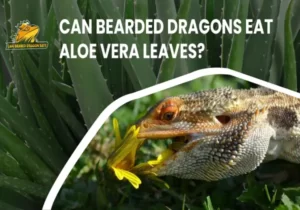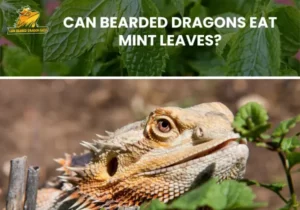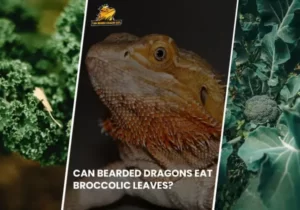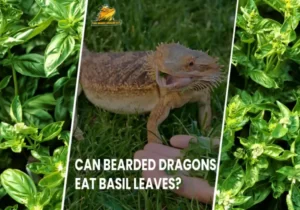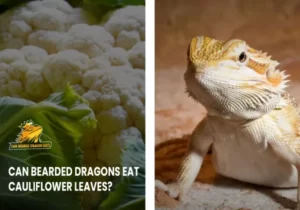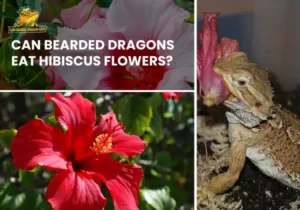Exploring the leafy side of a bearded dragon’s diet unveils a world of nutritional benefits. While not obligatory, incorporating leaves into their meals is highly advantageous for these omnivorous reptiles. Leaves like collard greens, mustard greens, and dandelion greens are not only safe but recommended, making up about 20-25% of an adult bearded dragon’s dietary intake.
Packed with vitamins A, C, and K, leaves are a powerhouse of nutrition that supports immune health, vision, and blood clotting. They are also a significant source of calcium, which is essential for maintaining robust bone structure. However, balance is crucial as excess can lead to health issues. It’s important to note that some leaves, like those of rhubarb and avocado, are toxic to bearded dragons and should be strictly avoided.
Owners should strive for a varied diet to prevent nutritional excesses and deficiencies. By incorporating the right types of leaves in appropriate amounts, you contribute to your bearded dragon’s vibrant health and longevity, ensuring they get the most out of their greens.
5 Reasons Why Leaves Should be A Part of Bearded Dragons Diet
Leaves, particularly leafy greens, can be a beneficial and nutritious part of a bearded dragon’s diet for several reasons:
1. Nutrient-Rich
Leaves, especially leafy greens, are nutrient-rich and provide essential vitamins and minerals such as vitamin A, calcium, and dietary fiber. These nutrients are vital for your bearded dragon’s overall health, growth, and well-being.
2. Hydration
Leafy greens have a high water content, helping to keep your bearded dragon properly hydrated. Adequate hydration is crucial for various bodily functions, including digestion and temperature regulation.
3. Digestive Health
The fiber in leaves promotes healthy digestion and can help prevent common digestive issues like constipation and impaction. A diet that includes leaves contributes to a well-functioning digestive system.
4. Dietary Diversity
Incorporating leaves into your bearded dragon’s diet adds variety. A diverse diet ensures that your pet receives a wide range of nutrients, reducing the risk of nutritional deficiencies and imbalances.
5. Calcium Source
Some leafy greens are excellent sources of calcium, a crucial mineral for bearded dragons. Calcium is essential for strong bones and muscle function. Including leaves in their diet can help meet their calcium requirements
Benefits of Eating Leaves for Bearded Dragons
In the diverse diet of a bearded dragon, leaves are not just garnished, they’re a staple that brings a multitude of benefits. These scaly pets require a blend of animal protein and plant matter, with leaves being an integral component of the latter. When selectively chosen, leaves can be a treasure trove of nutrients that contribute significantly to the health and well-being of bearded dragons.
Nutritional Powerhouses
Leaves such as mustard, turnip, and collard greens are packed with essential vitamins and minerals. They are rich in Vitamin A, which is crucial for maintaining healthy vision, skin, and immune function. The presence of Vitamin C boosts their immune system, while Vitamin K plays a vital role in blood clotting mechanisms.
Calcium Content
A critical nutrient in a bearded dragon’s diet is calcium, and leafy greens are a prime source. This mineral is vital for bone health and preventing metabolic bone disease, a common ailment in captive dragons.
Fiber-Filled
The fiber in leaves aids in digestion, ensuring a smooth gastrointestinal transit, which is essential for the prevention of common digestive issues in reptiles.
Low-Calorie Hydration
Leaves have high water content, providing hydration while being low in calories and helping to maintain a healthy weight.
Variety for Vitality
Offering a variety of leaves mimics the diverse flora of their natural habitat, which is key to keeping them stimulated and preventing nutritional boredom.
Antioxidants Abound
Many leaves are rich in antioxidants, which combat free radicals and can contribute to the overall longevity of your bearded dragon.
Incorporating a measured mix of safe, edible leaves into your bearded dragon’s diet enhances their health profile, ensuring a happy, active, and long-lived companion.
Why You Should Avoid Leaves In Daily Routine To Bearded Dragons?
While leaves can be beneficial to bearded dragons, incorporating them into their daily diet requires caution. Overfeeding leaves to these reptiles can lead to several health issues, which is why moderation is key.
Oxalates Concern
Some leaves contain high levels of oxalates, which bind to calcium and can prevent its absorption, leading to calcium deficiencies and potentially to metabolic bone disease.
Goitrogens Presence
Goitrogens, found in some greens, can disrupt thyroid function and can lead to goiter development, affecting overall health and metabolism.
Digestive Distress
An excess of certain types of leaves may cause digestive issues, such as diarrhea, which can lead to dehydration and nutrient loss.
Nutritional Imbalance
Bearded dragons need a varied diet. Relying too heavily on leaves can lead to a nutritional imbalance, depriving them of the proteins and fats they also require.
Toxicity Risks
Not all leaves are safe; some, like those from rhubarb or avocado, are toxic to bearded dragons and can cause serious health problems.
Hydration Overload
While hydration is important, too much water from wet leaves can lead to diarrhea, which can be dehydrating and lead to an imbalance of electrolytes in your pet.
Types of Leaves Safe for Bearded Dragons
Here’s a list of types of leaves that are generally safe for bearded dragons to eat:
Collard Greens
Collard greens are high in calcium and fiber, making them an excellent choice for bearded dragons.
They provide essential nutrients while aiding in digestion.
Mustard Greens
Mustard greens are another nutritious leafy green option for bearded dragons.
They are rich in vitamins and minerals, including calcium and vitamin A.
Dandelion Greens
Dandelion greens are a natural source of vitamins and minerals.
They are also known for their potential detoxifying properties.
Turnip Greens
Turnip greens are a good source of calcium and other essential nutrients.
Bearded dragons often enjoy the taste of turnip greens.
Endive
Endive is a leafy green with a slightly bitter taste.
It provides vitamins and minerals while adding variety to the diet.
Escarole
Escarole is another leafy green with a slightly bitter flavor.
It offers essential nutrients and can be part of a balanced diet.
Kale (in moderation)
Kale is rich in nutrients but should be fed in moderation due to its high oxalate content.
Rotate kale with other greens to prevent potential calcium absorption issues.
Swiss Chard (in moderation):
Swiss chard is another leafy green option, but it should be fed in moderation.
It contains oxalates, so it’s best when part of a varied diet.
Arugula
Arugula can be fed occasionally as a part of a varied diet.
It provides some essential nutrients and adds flavor diversity.
Remember to thoroughly wash and rinse any leaves you offer to your bearded dragon to remove any pesticides or contaminants. Also, ensure that the leaves are fresh and free of wilting. While these leaves are generally safe, it’s essential to provide a variety of greens and vegetables to ensure a balanced diet for your bearded dragon. Additionally, always consult with a reptile veterinarian or specialist for specific dietary recommendations for your pet.
Leaves to Avoid
Here’s a list of leaves that should be avoided for feeding to bearded dragons as they can be potentially toxic or harmful to their health:
Rhubarb Leaves
Rhubarb leaves contain oxalic acid, which can be toxic to bearded dragons when consumed in significant quantities.
Oxalic acid can bind with calcium, potentially leading to calcium deficiency.
Spinach
Spinach is high in oxalates, which can interfere with calcium absorption and may contribute to the development of kidney stones in bearded dragons.
It’s best to avoid feeding spinach altogether.
Beet Greens:
Beet greens contain oxalates, similar to spinach, and should be avoided for the same reasons.
Spinach Beet Leaves
Spinach beet leaves, also known as chard, contain oxalates and should be fed in moderation, if at all.
Cabbage
Cabbage can cause digestive issues and gas in bearded dragons.
It’s best to avoid feeding cabbage to prevent potential gastrointestinal problems.
Kale (in excessive amounts)
While kale can be fed in moderation, it should not be a primary staple due to its high oxalate content.
Excessive consumption of kale can interfere with calcium absorption.
Broccoli (in excessive amounts)
Broccoli contains goitrogens that can affect thyroid function if consumed in large quantities.
Feeding small amounts as an occasional treat is acceptable.
Iceberg Lettuce
Iceberg lettuce has low nutritional value and can lead to digestive problems due to its high water content.
It should be avoided as a staple green.
Tomato Leaves and Stems
Tomato leaves and stems contain solanine, a toxic substance for bearded dragons.
Avoid feeding any part of the tomato plant.
Any Leaves from Toxic Plants
Bearded dragons may come into contact with outdoor plants or vegetation. Ensure they are not consuming leaves from toxic plants, as many can be harmful or lethal.
It’s essential to be cautious and knowledgeable about the plants you offer to your bearded dragon. Always research the specific leafy greens and vegetables you plan to feed and consult with a reptile veterinarian or specialist for guidance on creating a safe and nutritious diet for your pet
Steps to Prepare Fruits for Bearded Dragon’s Diet
Preparing leaves for a bearded dragon’s diet involves several steps to ensure the greens are safe, nutritious, and appealing to your pet. Here’s how to do it properly:
Choose Safe Leaves: Select suitable leafy greens like collard, dandelion, and mustard greens, ensuring they are non-toxic and nutrient-rich for bearded dragons.
Wash Thoroughly: Rinse the leaves under cold running water to remove any dirt or potential pesticides, especially if they are not organic.
Cut to Size: Chop the leaves into small, manageable pieces no larger than the distance between the bearded dragon’s eyes to prevent choking.
Dry Off: Gently pat the leaves dry with a paper towel to avoid excessive moisture in the habitat, which could increase humidity levels.
Mix for Variety: Combine different types of leaves to provide a range of nutrients and flavors, encouraging a well-rounded diet.
Calcium Dusting: Lightly dust the leaves with a calcium supplement occasionally to support bone health, but avoid over-supplementation.
Serve Fresh: Offer the prepared leaves to your bearded dragon, removing any uneaten portions after their mealtime to maintain hygiene and prevent spoilage.
By following these steps, you can safely incorporate leaves into your bearded dragon’s diet, promoting their health and well-being.
Frequency Leafy Greens Specific Leaves (e.g., Spinach) Leaves with High Water Content (e.g., Lettuce)
| Frequency | Times |
| Daily | Every day |
| Weekly | 4-5 times per week 1-2 times per week max 2-3 times per week |
| Monthly | Occasionally as variety Once a month max Occasionally for hydration |
FAQs
Do I need to remove stems from the leaves before feeding them to my bearded dragon?
It’s generally a good idea to remove tough stems, as they can be difficult for bearded dragons to chew and digest.
Can bearded dragons have dried leaves?
Bearded dragons should be given fresh leaves rather than dried ones, as fresh leaves have a higher water content and nutritional value.
Can baby bearded dragons eat the same leaves as adults?
Baby bearded dragons can eat the same types of leaves as adults but in smaller quantities. They require more protein from insects compared to adults, so leaves should make up a smaller portion of their diet.
Can I mix leaves with other foods for my bearded dragon?
Yes, mixing leaves with vegetables, appropriate fruits, and occasional insects can make meals more appealing and nutritionally balanced for your bearded dragon.
Can bearded dragons eat frozen leaves?
Frozen leaves are not recommended as they can lose nutritional value and become mushy upon thawing, which may be less appealing to your pet.
Can I feed my bearded dragon the leaves from my houseplants?
No, most houseplants are not safe for bearded dragons. Only feed leaves that are known to be safe and non-toxic to reptiles.
Conclusion
While leaves can be a nutritious part of a bearded dragon’s diet, it’s essential to approach their inclusion with care and knowledge. Safe leafy greens, such as collard and dandelion greens, provide valuable nutrients and should be a regular feature in their meals. However, moderation is keycertain leaves should be offered sparingly due to high oxalate content or potential for nutritional imbalance.
By adhering to recommended frequencies and preparation steps, you can help maintain the health and happiness of your bearded dragon. Always remember to consult with a veterinarian for personalized dietary advice to cater to your bearded dragon’s unique requirements.
Can Bearded Dragons Eat Cilantro? Benefits and Risks
Today, we’re tackling a quirky question that might tickle your...
Read MoreCan Bearded Dragons Eat Baby Spinach?
As dedicated pet owners, we strive to offer the best...
Read MoreCan Bearded Dragons Eat Cabbage Leaves?
As humans, we know that cabbage is loaded with nutrients...
Read MoreCan Bearded Dragons Eat Spinach Leaves?
Are you considering adding spinach leaves to your Bearded Dragon’s...
Read MoreCan Bearded Dragons Eat Celery Leaves?
As a pet lover and proprietor of a bearded dragon,...
Read MoreCan Bearded Dragons Eat Mint Leaves?
Are you a bearded dragon owner wondering, “Can Bearded Dragons...
Read MoreCan Bearded Dragons Eat Broccoli Leaves?
Giving our flaky friends a fair and sound eating routine...
Read MoreCan Bearded Dragons Eat Basil Leaves?
Can bearded dragons eat basil leaves? The short answer is...
Read MoreCan Bearded Dragons Eat Cauliflower Leaves?
As a responsible reptile enthusiast, I’ve taken in the significance...
Read MoreCan Bearded Dragons Eat Bell Pepper Leaves?
I’m always on the lookout for new and healthy food...
Read More



